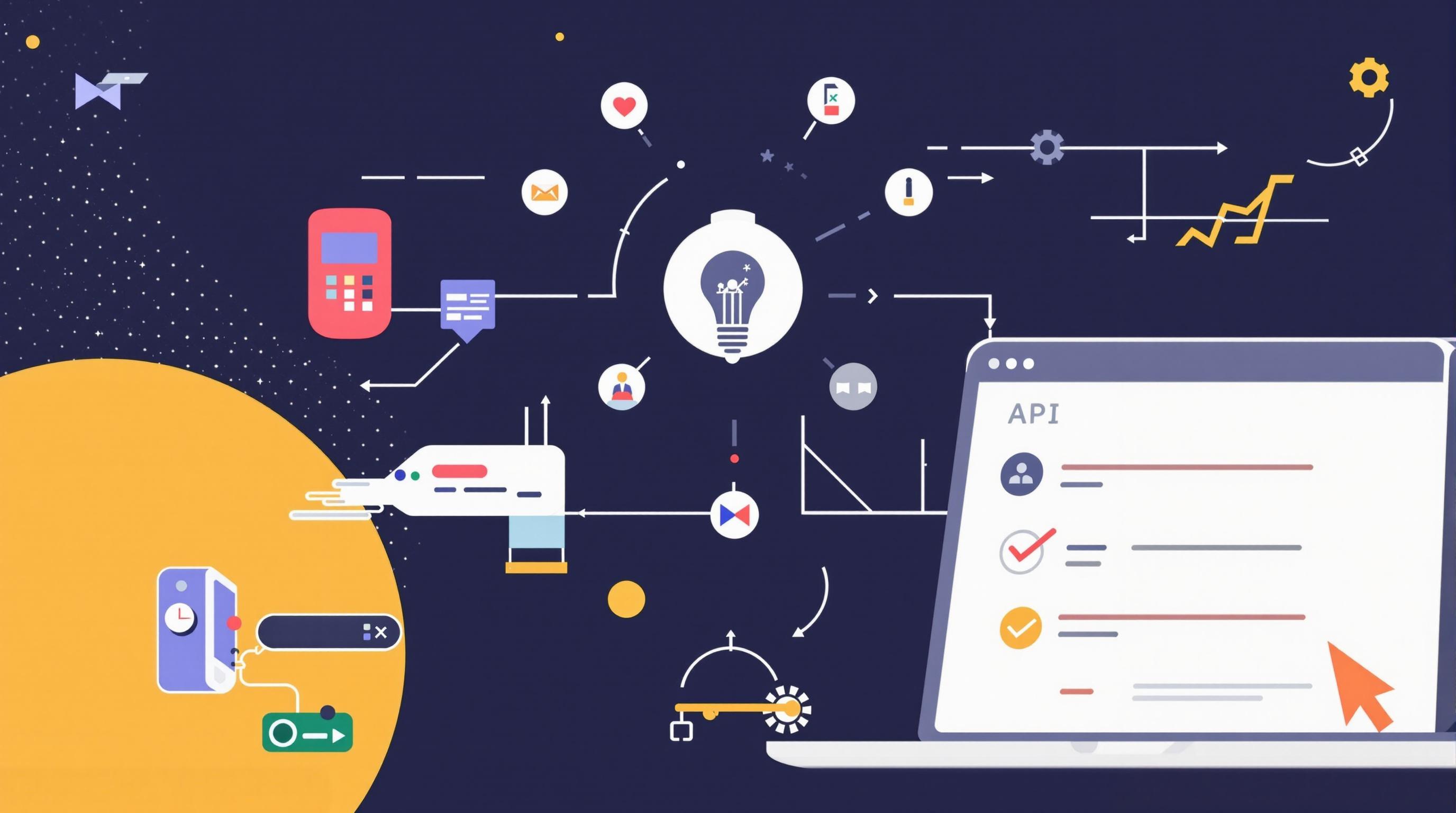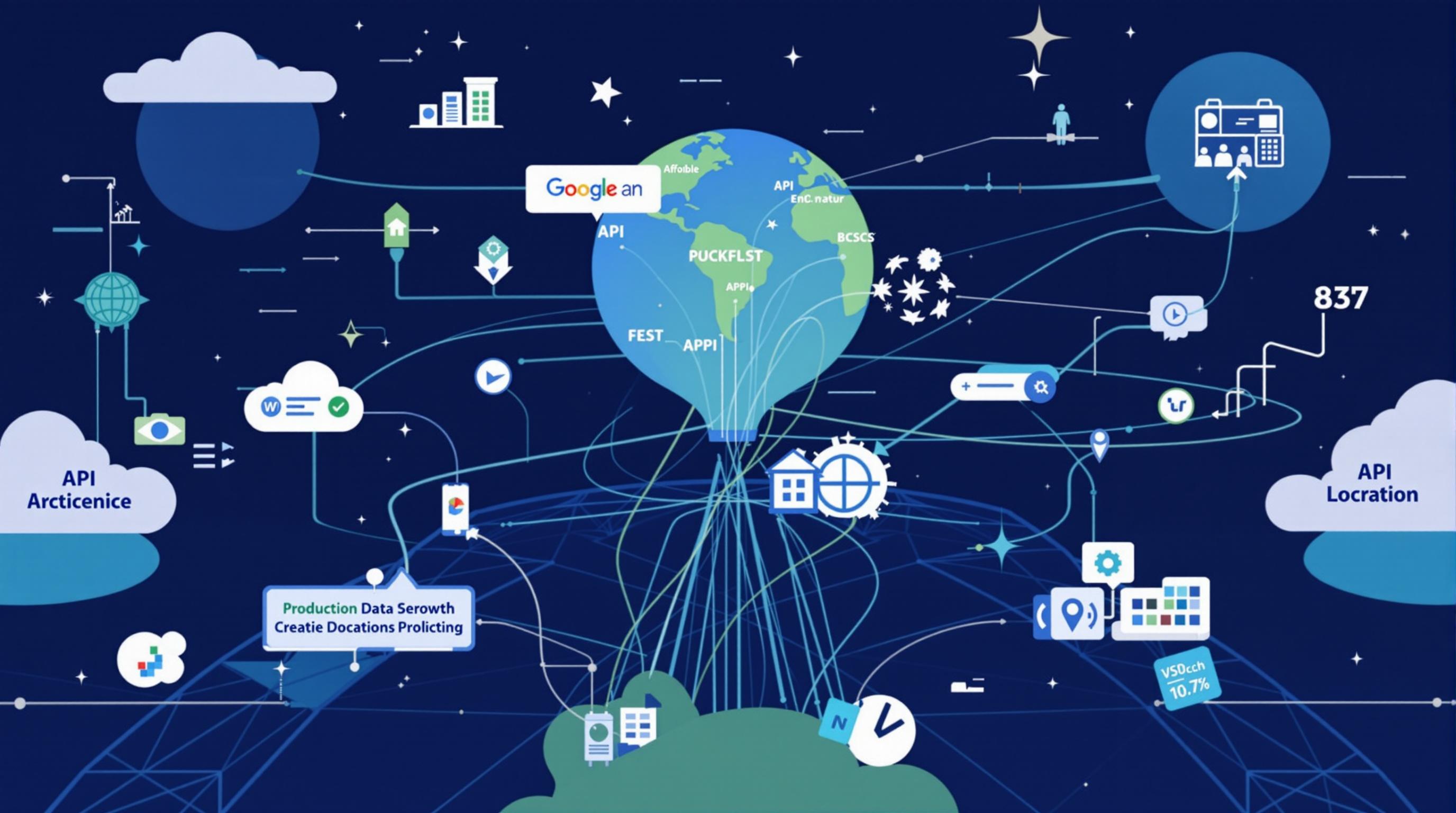Related Articles
- Top 6 Next-Gen B2B SaaS Engines Shaping Retention With AI-Powered Predictive Insights Since 2019
- Top 6 Emerging SaaS Onboarding Platforms of the Last Five Years That Actually Boost User Stickiness
- Top 8 Under-the-Radar Analytics Tools Launching Since 2019 That Outperform Big Names
- Top 7 Next-Gen Workflow Automation Platforms Revealed Comparing Game-Changing Features from the Last Five Years
- Top 6 Next-Gen Endpoint Security Solutions Since 2019 That Outsmart Modern Cyber Threats
- The Unseen Ripple Effect: How Obscure API Endpoints Influence Global Data Ecosystems in Unexpected Ways
5 Unexpected Challenges in API Integration No One Talks About and How to Master Them
5 Unexpected Challenges in API Integration No One Talks About and How to Master Them
5 Unexpected Challenges in API Integration No One Talks About and How to Master Them
1. Inconsistent Data Formatting
When integrating APIs, one of the subtle yet frustrating challenges is inconsistent data formatting. Different APIs may represent similar data types in varied forms, such as timestamps being in ISO 8601 format in one API but Unix epoch time in another. This inconsistency can lead to errors or require additional transformation layers, complicating integration efforts.
Mastering this challenge involves establishing a clear data normalization process. Developers should implement a parsing layer that standardizes incoming data into a unified format before use. Utilizing libraries or middleware designed for data transformation can also streamline this process, ensuring reliability and reducing bugs.
Documentation review and testing are crucial at this stage. By thoroughly understanding each API's data formats and output standards, developers can anticipate differences and prepare their applications accordingly, mitigating integration problems early on.
2. Rate Limiting Surprises
Rate limiting is a common mechanism APIs use to control traffic volume, but unexpected rate limits can stall integrations unexpectedly. Sometimes rate limits are not clearly documented or can vary depending on endpoints, leading to requests being blocked prematurely.
To master rate limiting, use adaptive request management techniques such as exponential backoff and request queuing. Monitoring API responses for rate-limit headers enables your application to dynamically pause and retry requests, thereby maintaining stability and performance.
Additionally, reaching out proactively to API providers for clarification on usage limits and requesting higher quotas when necessary helps avoid disruptions. Building robust error handling for rate-limit responses ensures your system degrades gracefully rather than failing outright.
3. Authentication Complexity
Authentication can vary widely between APIs, from simple API keys to OAuth 2.0 flows, and sometimes the security mechanisms change without notice. Overlooking these nuances may cause integration failures or security vulnerabilities.
Mastering authentication challenges begins with thoroughly understanding the authentication protocol employed. Implement secure storage of credentials and refresh tokens, and automate token renewal processes to avoid unexpected downtime.
It’s also recommended to stay updated with the API provider’s security announcements to anticipate changes. Using security-focused client libraries can reduce the complexity and increase the reliability of authentication implementations.
4. Versioning and Deprecated Endpoints
APIs evolve over time, introducing new versions and deprecating old endpoints. Many developers encounter unexpected breaks when older API versions are sunset with little warning, resulting in malfunctioning integrations.
To master this issue, actively monitor API version announcements and plan upgrade paths as part of your integration lifecycle. Designing abstraction layers in your codebase can allow easier swapping or updating of API endpoints without major rewrites.
Implementing automated tests against the latest API versions can catch deprecation issues early. Engaging with API provider communities and subscribing to update notifications help maintain long-term integration health.
5. Handling Partial and Incomplete Responses
Sometimes APIs return partial or incomplete data due to server issues or query limitations, yet this challenge is rarely flagged upfront. Applications expecting full datasets may fail or behave unpredictably when encountering such responses.
Master the handling of partial responses by building your client logic to validate data completeness and handle missing fields gracefully. Implement retry mechanisms or fallback strategies to obtain missing data where possible.
Moreover, logging instances of incomplete data assists in identifying recurring issues that may require escalated support from API providers. Robust error handling around data integrity ensures your applications maintain usability despite intermittent API inconsistencies.
6. Latency Variations Affecting User Experience
API calls introduce network latency which can vary widely, depending on server load, geographic location, or network conditions. These latency variations are often unexpected and can degrade application responsiveness.
To address latency challenges, employ caching mechanisms to store frequently requested data, thereby reducing API call frequency. Timeout settings and asynchronous API calls can help maintain a smooth user experience.
Testing your integration under different network scenarios also prepares your system to degrade gracefully. Additionally, consider using content delivery networks (CDNs) or proxy servers close to your user base to reduce latency when possible.
7. Inadequate or Outdated Documentation
API documentation is critical but sometimes incomplete, outdated, or inconsistent, leading to guesswork during integration. This lack of clarity can result in wasted development time and integration errors.
Master this by leveraging community forums, developer support channels, and tools like Postman to experimentally explore APIs beyond what the documentation provides. Creating your own documentation notes during integration can help future-proof maintenance efforts.
When possible, provide feedback to API providers about documentation gaps or errors. Collaborative input often prompts providers to improve their resources, benefiting the wider developer community.
8. Complex Error Handling and Unclear Response Codes
Different APIs use various conventions for error reporting and status codes, sometimes lacking clarity or consistency. This makes handling errors reliably a challenging but essential task.
To master error handling, design a comprehensive strategy that interprets different API response formats and status codes in a unified manner. Implement retries for transient errors and provide meaningful messages to end-users or downstream systems.
Logging errors including full API responses assists in debugging and continuous improvement. Understanding common error patterns and building defensive logic ensures your integration remains resilient.
9. Cross-Origin Resource Sharing (CORS) Restrictions
When integrating browser-based applications with third-party APIs, CORS restrictions can block requests due to security policies. Developers often overlook these limitations until development stalls.
Mastering CORS challenges involves either configuring your backend as a proxy to make API calls or working with API providers who support CORS in their headers. Understanding browser security models is key to navigating such restrictions.
Testing integrations in realistic environments helps identify CORS issues early. Employing standard headers and ensuring HTTPS usage also facilitates smoother interactions with secure APIs.
10. Data Synchronization and Consistency Issues
Maintaining synchronized data between your system and an external API can be unexpectedly difficult due to eventual consistency models, delays, or partial updates. These issues may cause your system to show outdated or incorrect information.
To master synchronization challenges, consider implementing webhook subscriptions or polling strategies to receive timely updates. Establishing conflict resolution rules and data reconciliation processes ensures data reliability.
Periodically auditing data consistency helps catch anomalies early. Collaborating closely with API providers to understand their data refresh cycles and limitations further improves synchronization outcomes.
References:
1. "REST API Integration Challenges," MuleSoft, 2023. https://www.mulesoft.com/resources/api/rest-integration-challenges
2. "Handling Rate Limits in APIs," RapidAPI, 2022. https://rapidapi.com/blog/api-rate-limiting/
3. "Strategies for Dealing with API Versioning," Nordic APIs, 2021. https://nordicapis.com/how-to-handle-api-versioning/




